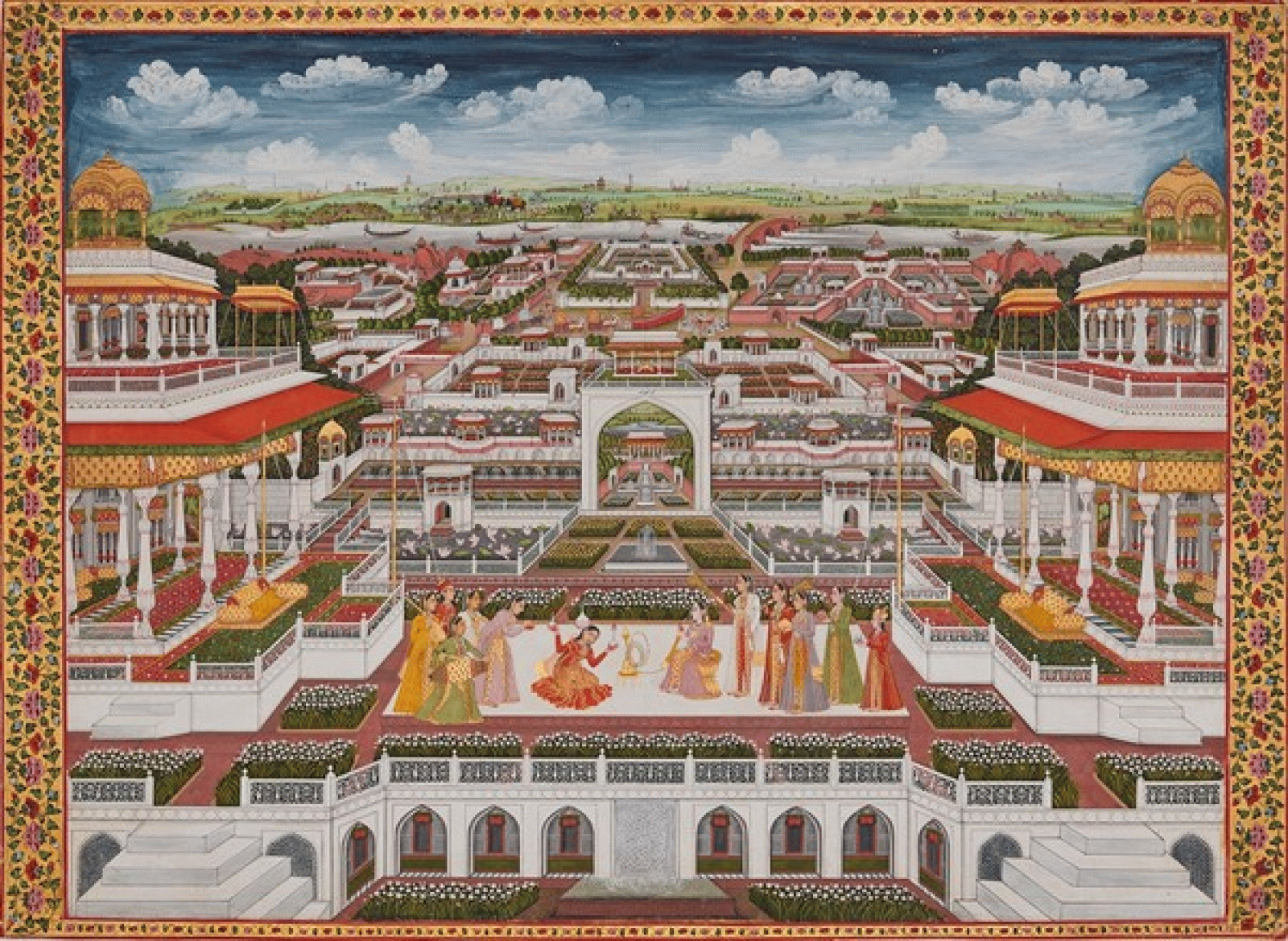4A Lab Seminar
Parul Singh: Building Worlds: Reading Spatiality, Power and Desire in Eighteenth-Century Paintings

“Entertainment in a Palace Garden” painted by Faizullah (1765–1775), Faizabad, India. Opaque watercolour and gold on paper. 50.5 cm x 69.2 cm; © The Aga Khan Museum.
The paper focuses on thirteen miniatures that were once part of a murraqa (album) made for the Nawab of Awadh (India), Shuja ud-Daula, between 1755 and 1775. These paintings have been either signed by or attributed to the artist Faizullah, who worked at the courts of Delhi and Faizabad between c.1740–1775. The paintings are emblematic of Faizullah’s imaginary vistas – unfolding visions of receding terraces, waterways, enclosed gardens, distant fields, and mountains, and containing diverse vignettes of elite women engaged in pleasurable pursuits, working men and women, fighting armies, mythical beasts that emerge from rivers to attack the unwary, and even protagonists of literary texts such as Laila-Majnun in rendezvous. In the paintings there is no resolution, neither in terms of narrative nor in terms of perspective: as soon as one single point perspective seems to resolve into a distant space, Faizullah intentionally introduces another set of receding lines, and then yet another, suggesting infinite narratives and perspectives.
Scholars have mostly viewed these works through the lenses of the encounter between mid-eighteenth-century “traditional” Mughal painting and the European “modern” perspectival manner of painting; in this view, Faizullah falls short of emulating Western style perspectives – “misunderstanding” the single point perspectival view or becoming “delirious” under its influence. This discourse is encumbered by colonial evaluations privileging the single point perspective as “a more scientifically rendered perspective.” Viewing Faizullah’s vistas solely in terms of emulation of an increasingly dominant Europeanized aesthetics obscures our understanding of the many artistic sources available to Indian painters and the particular uses to which they were adapted. This paper attempts to unravel how certain perspectival or topographical views were ingeniously appropriated, changed, repurposed, and reperformed by artists working for different patrons, both European and Indian, to align them to the artistic preferences of their respective patrons.
Looking at one specific painting by Faizullah from the Album depicting an imaginary vista of the “Shalimar Gardens of Kashmir”, Parul Singh explores how this view was later repurposed by artist Mihr Chand, who worked for the Swiss adventurer Antoine Polier, and by a Rajasthani artist. Recognizing selective and purposeful alterations of the Shalimar vista makes us aware of the choices of the artists – what they extracted and used, discarded or changed, in these topographical views. Parul Singh also analyses such choices as ways that encoded culturally embedded “ways of seeing,” reflecting an assertion of territorial sovereignty by provincial rulers as well as a camouflaged desire and control over the ‘Other’ by European patrons.
Parul Singh is a Postdoctoral Fellow in the interdisciplinary programme 4A Laboratory: Art Histories, Archaeologies, Anthropologies, Aesthetics (May 2021–June 2022). She received her Ph.D. from the School of Arts and Aesthetics, Jawaharlal Nehru University, Delhi. Her doctoral thesis re-examines the visual culture of Awadh (Oudh) during the reign of Wajid Ali Shah (r. 1847–1856); her study contends that visual culture played a prominent role in maintaining and fortifying the power of the king in mid-nineteenth-century Awadh; it also shows how the cultural arena was turned into a site of socio-political negotiation and contestation between two major contenders: king Wajid Ali Shah and the British East India Company. Parul Singh was awarded the NTICVA (Nehru Trust for the Indian Collection at Victoria and Albert Museum) UK Visiting Fellowship (2015), the NTICVA- CWIT (Charles Wallace India Trust) joint study grant (2016), the Inlaks Shivdasani Foundation travel grant (2015), and a study grant by the John Bissell Foundation (2017).
28 February 2022, 3:00pm
The event takes place online.
Please register to this seminar session at: 4a_lab@khi.fi.it
Notice
This event will be documented photographically and/or recorded on video. Please let us know if you do not agree with the Kunsthistorisches Institut in Florenz using images in which you might be recognizable for event documentation and public relation purposes (e.g. social media).


